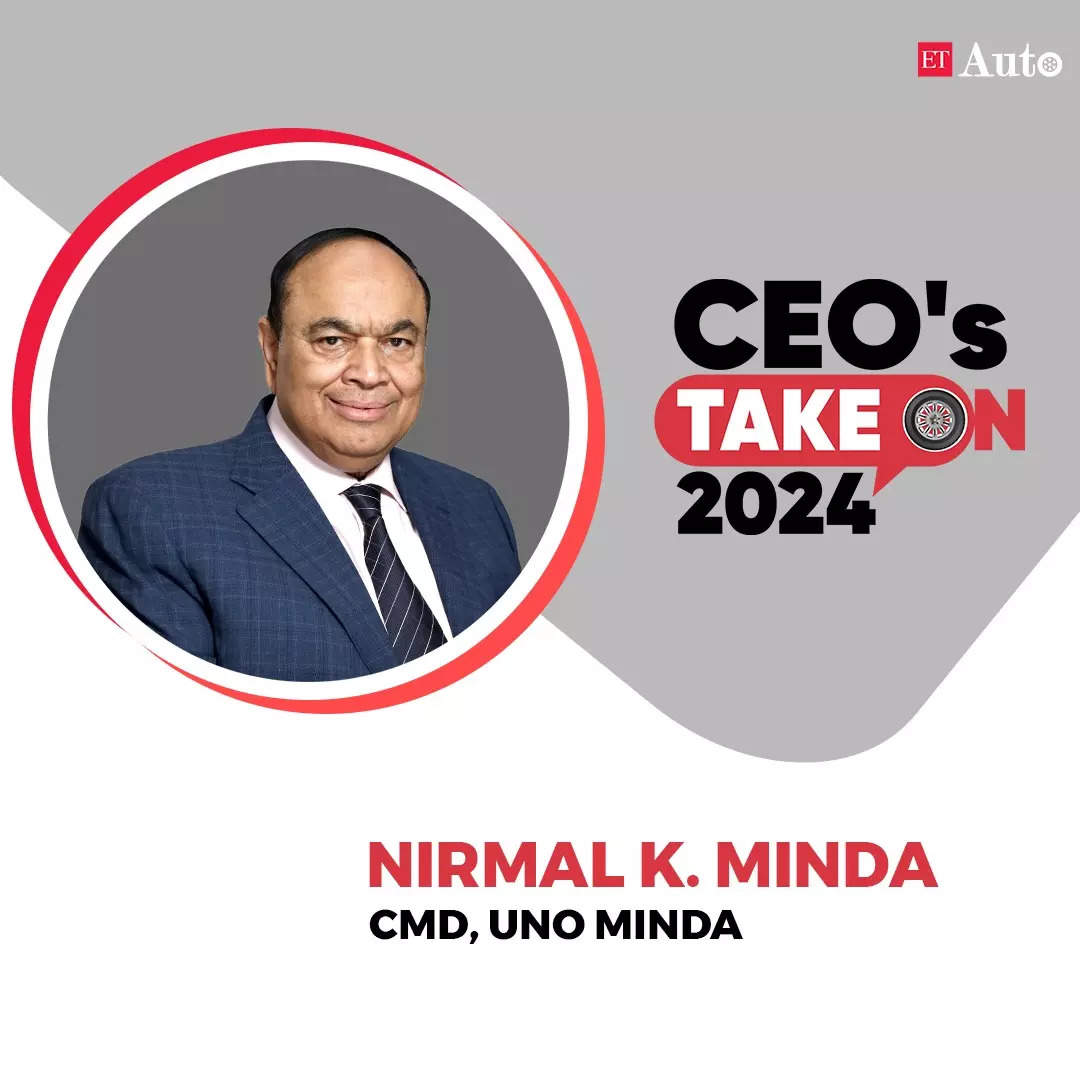
Edited excerpts:
Q: After two consecutive years of swift growth in the auto component industry’s performance, what is your outlook for 2024?
The past two years have seen a remarkable transformation in the Indian auto and auto component industry. Not only has the sector witnessed impressive growth, but it has also been characterized by a clear preference for enhanced features and improved comfort. This is evident in the dominance of SUVs and higher cc bikes, reflecting evolving consumer preferences.
Looking ahead, 2024 promises continued positive momentum. The two-wheeler segment, which has lagged behind, is poised for a strong comeback supported by recovery in the rural market. Meanwhile, the passenger vehicle segment is expected to maintain its growth trajectory, with some models still experiencing significant waiting periods. It is important to acknowledge that geopolitical uncertainties pose a potential risk of escalating commodity prices and supply chain disruptions. However, the industry has demonstrated resilience in navigating such challenges in the past, and its accumulated experience could be valuable in mitigating these potential impacts.
2024 also marks a crucial year for India’s electrification journey. These trends present exciting opportunities for the auto component industry. The growing demand for enhanced features, safer and greener mobility, and localization also open a new chapter with immense potential.
Q: What are the key micro and macro indicators that will play an important role in shaping up the auto component industry in 2024?
While India has a position as one of the world’s fastest-growing economies, its motor vehicle penetration per capita remains significantly lower compared to the global average. However, this disparity is anticipated to narrow gradually, fueled by rising disposable income and ushering in a lucrative market for the auto industry.
Beyond income growth, several factors are converging to propel the industry forward. A noticeable shift in consumer demand towards SUVs, electric vehicles (EVs), and advanced driver-assistance systems (ADAS) is expected to significantly impact the industry landscape.
The government’s commitment to promoting sustainable mobility through policy initiatives and increased infrastructure spending, the “Make in India” and “Atmanirbhar Bharat” programs, coupled with the global trend of supply chain realignment, position the Indian auto industry for enhanced competitiveness within the global market.
The anticipated peak in interest rates, potentially followed by cuts in the latter half of the year, could further stimulate consumer demand.
Q: What is your view on the readiness of the component industry for the shift towards adoption of multiple fuel technologies and electric vehicles (EVs) in 2024?
The Indian auto component industry is actively embracing the transition towards electric vehicles (EVs) and other alternative fuel technologies. Several strategic technology tie-ups have been established, aiming to augment technical capabilities. Besides, incumbent auto component players, new players and startups have also entered into EV component manufacturing. The Indian government’s “Make in India” and “PLI (Production Linked Incentive)” schemes aim to incentivize local production of key EV components, potentially creating a stronger domestic supply chain.
However, continued efforts are needed to bridge the technological gap, address the workforce shortage, and mitigate potential supply chain disruptions. Additionally, focusing on continued collaboration between established players and new entrants including OEM will be crucial for the industry to fully capitalize on the opportunities presented.
Uno Minda stands out as an early mover in this critical shift. Our commitment began with CNG kit manufacturing in 2010, followed by investments in EV R&D in 2017. Today, we boast over 10 EV-specific components and systems manufactured in our recently commissioned greenfield EV plants.
Q: What will be the key technologies that will shape the next decade of the auto component industry?
As Uno Minda gazes toward the next decade, we envision a future defined by technological advancements, focusing on the PACE (Personalization, Autonomous, Connected, and Electric) megatrends that are reshaping the automotive landscape.
As EVs are gaining traction, advancements in battery technology, fast-charging infrastructure, and increased range are redefining the landscape of automobiles. Offering a clean alternative to traditional fuel, hydrogen fuel cells are also gaining attention due to their zero-emission properties and potential for long-range driving.
Artificial intelligence (AI) and machine learning (ML) will play a crucial role in developing autonomous driving functionalities. Integrating components with IoT will lead to real-time data collection, enabling condition-based monitoring and proactive maintenance. This will improve efficiency and reduce downtime for vehicles. AR technology enhances the driving experience by providing real-time navigation, alerts, and information on windshields or heads-up displays.
Advanced driver-assistance systems (ADAS) systems will continue to evolve, incorporating features like automated emergency braking, lane departure warning, and adaptive cruise control. Cars equipped with AI, LiDAR, and advanced sensors are poised to revolutionize transportation, enhancing safety and efficiency while reducing accidents.
Additive manufacturing techniques facilitate rapid prototyping and customization. Lightweight materials like carbon fiber composites and aluminum alloys improve fuel efficiency and vehicle performance while maintaining structural integrity.
Q: Do you think the Indian auto component industry has the potential to become a global manufacturing hub and play an important role in the global value chain?
The Indian auto component industry holds immense potential to emerge as a global manufacturing hub and contribute significantly to the global value chain. Uno Minda believes the industry is already on the right track, evidenced by the exports exceeding USD 20 billion in calendar year 2023, increased R&D investment with several foreign companies establishing technology centers in India.
Key factors driving India’s rise include robust domestic market, cost competitiveness, technological advancement, supportive government policies and a large pool of skilled engineers and technicians.
By leveraging these strengths and fostering a collaborative environment, India’s auto component industry is poised to become a major force in the global landscape.
Q: What are the key factors that work in favor of India and what limitations do we have as a country?
At Uno Minda, we believe that India’s demographic dividend is a major asset, with a young and vibrant population that is driven by an entrepreneurial spirit and a thirst for knowledge. Digitalization is also rapidly gaining ground in India, with various sectors, such as e-commerce and fintech, embracing technology. This shift not only fosters financial inclusion but also improves service delivery and provides access to global markets.
Notably, India’s startup ecosystem is on the rise, fueled by the risk-taking culture of its young minds. The focus on sustainability is increasing across industries, paving the way for a greener future. However, there still exist gaps in infrastructure that need to be addressed, particularly in logistics and connectivity, to facilitate efficient resource allocation. Continuous upskilling and reskilling programs are essential for our progress.
By leveraging our strengths, embracing collaboration, and focusing on inclusive growth, India can overcome these challenges and unlock its true potential.
Q: What is your vision for 2030 for the auto component industry?
Looking ahead to 2030, a powerful confluence of sustainability, connectivity, and artificial intelligence (AI) will propel a dramatic transformation within the auto component industry. India is uniquely positioned to capitalize on this shift, with the potential to not only achieve self-sufficiency but also emerge as a major global exporter. This is driven by a growing trend of international companies recognizing India as a strategic hub for both manufacturing and cutting-edge R&D.
To fully realize this potential, a focus on sustainable practices, seamless integration with connected technologies, and strategic investment in AI research will be paramount.
















